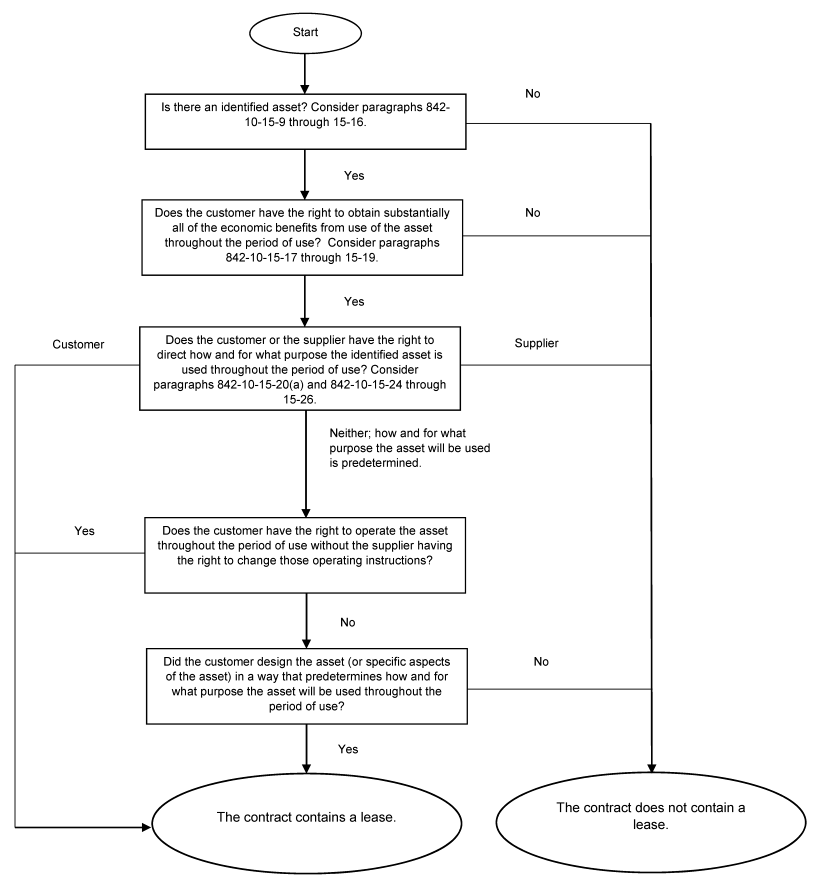Identifying Leases Under the New Lease Accounting Standard
November 12, 2018 •Calvin Rowland, CPA, Assurance Partner

After taking care of legacy leases, your next step in adopting "ASU 2016-2, Leases" is accounting for new leases. This process starts with identification.
Why Go Through the Identification Process?
I suspect that most of you won't spend much time considering lease identification. If you believe that you inherently know what a lease is, you probably won't be motivated to go through a step-by-step analysis to see if a contract meets the requirements. Honestly, if you have a simple business model and few long-term contracts, your odds of a successful outcome are quite good using "a lease is, what a lease is" approach. However, it's important that you at least familiarize yourself with the new lease identification concepts because:
- you may be surprised what types of arrangements will and will not qualify for lease accounting, particularly if your business is highly collaborative with customers or suppliers, and
- identification of leases embedded within contracts will be more important now that all leases will be capitalized.
Lease Definition
Before we go through the exclusions and identification questions, let's review the new definition of a lease:
"A contract, or part of a contract, that conveys the right to control the use of identified property, plant, or equipment (an identified asset) for a period of time in exchange for consideration."
I have underlined a couple of new terms that are important to lease identification:
- Contract - A contract should be evaluated to determine if it is a lease or if it contains a lease. The standard describes two contract participants: the supplier (lessor) and the customer (lessee).
- Control - Even if it's the supplier operating the underlying asset, if the customer has the right to direct the asset's use and receive the benefits, it may be a lease.
Exclusions
The following leases are explicitly excluded from lease accounting:
- Intangible assets
- Mineral rights (and similar assets)
- Biological assets (e.g. timber)
- Inventory
- Assets under construction
Also, you may elect not to capitalize leases with terms of 12 months or less.
Identification Questions
You can determine if a contract contains a lease by answering three to five questions. Within the implementation guidance, the standard provides a flow chart that walks you through these questions. The flow chart is reproduced with permission below and we will briefly explore each question.

The flowchart above is copyrighted by the Financial Accounting Foundation, 401 Merritt 7, Norwalk, CT 06856, USA, and is used with permission.
Identified Asset
Is there an identified asset?
First, the asset must be property, plant or equipment and it must be a whole asset or otherwise physically distinct. Office space within a building is physically distinct but capacity within a pipeline is not.
Second, the arrangement must identify a specific asset. However, it is not required to do this explicitly. I think most of us understand that simply excluding identifying information from a written contract isn't some sort of accounting loophole. However, there is more to the concept of an implicitly identified asset. If the supplier can only use one particular asset to fulfill a contract, then that asset is an identified asset. The same contract with different suppliers could have different answers to this question depending on what asset or assets they have available to fulfill the contract.
Even if there is an identified asset, the answer to this question is "no" if the supplier has substantive substitution rights. To be substantive, the supplier must both:
- have the practical ability to substitute and
- would benefit economically from the substitution.
For 1) and 2) above, evaluate the facts and circumstances at the inception of the contract. You do not have to consider potential but unlikely future events like extreme market changes or new technologies. Conditional substitution rights that require the occurrence of a future event are not substantive. Also, the standard excludes protective features such as the supplier's right to substitute for repairs and maintenance.
If the customer doesn't have enough insight into the supplier's facts and circumstances to determine if the substitution rights are substantive, then the customer must presume the substitution rights are not substantive.
A "no" answer to this question eliminates a contract from lease consideration. A "yes" moves you to the next question.
Economic Benefits
Does the customer have the right to obtain substantially all of the economic benefits from the use of the asset throughout the period of use?
Several things to consider when answering this question:
The qualification is based on the rights to the benefits and not the expected benefits to be received. A right of first refusal is equivalent to a firm commitment even if the customer does not plan to exercise this right.
The standard setters did not want to create a bright line so they used a qualitative term "substantially all" to describe the benefit threshold instead of a quantitative threshold. However, if you are looking for a rule of thumb, I would suggest "close to 90%".
You are measuring economic benefits from use of the asset (production or output) including byproducts but not from the ownership of the asset (gain in asset value).
Consider contractual features that limit or restrict the asset's use during the contract period in determining the asset's economic benefits and not in determining customer's rights. If a lease gives you the sole rights to use a vehicle for a year; you have obtained substantially all of the economic benefits for that year even if there is an annual mileage limitation that is substantially less than the miles that vehicle could be driven.
Do not confuse variable lease consideration for economic benefits. For example, percentage rent on retail space is not an economic benefit retained by the supplier.
A "no" answer to this question eliminates a contract from lease consideration. A "yes" moves you to the next question.
Right to Direct
Does the customer or the supplier have the right to direct how and for what purpose the identified asset is used throughout the period of use?
A contract often gives various decision-making rights to both the supplier and the customer. You need to focus on who makes the decisions that most directly affect the economic benefits and not general operating decisions. Think about the asset's purpose and consider who makes the decisions that drive the what, when, where and how much is produced from that purpose.
For example, deciding the molds to use in a injection molding machine is an example of a relevant right because this decision determines what products are being manufactured. Alternatively, the decision about when the injection molding machine should be shut-down for maintenance is not relevant as this right only gives operational control to the decision maker.
If the answer to this question is "the customer" you have a lease, if the answer is "the supplier" you do not have a lease. If the answer is neither because the most relevant decisions were predetermined by the contract or the design of the asset, you must move to the next question.
Customer Operation
Does the customer have the right to operate the asset throughout the period of use without the supplier having the right to change those operating instructions?
If all the relevant questions are defined in the contract, then and only then consider who has the right to operate the asset.
A "yes" answer to this question means you have a lease, a "no" means you must move to the next question.
Customer Design
Did the customer design the asset (or specific aspects of the asset) in a way that predetermines how and for what purpose the asset will be used through the period of use?
If the customer is involved in the design of a supplier's asset, evaluate their level of involvement and the impact the design has on how and for what purpose the asset is used.
A "yes" answer to this question means you have a lease, a "no" means you do not. No further questions.
Conclusion
The new lease accounting standard casts a wide net over contracts and then goes through a process of elimination to cull the list down to qualifying leases. I advise, that you learn the disqualifiers well enough that you don't have to start with the first question and work your way down the flow chart on every contract. Just don't assume that because you haven't applied lease accounting to a type of arrangement in the past, you shouldn't apply it going forward. In addition, the implementation guidance within the standard has examples and there are some helpful accounting guides from a variety of sources available online.
HoganTaylor’s Assurance Practice
 If you are struggling to understand some of the identification concepts, or if you would like more information about HoganTaylor’s Assurance practice, please contact Calvin Rowland, CPA, Assurance Partner and author of this article, at crowland@hogantaylor.com.
If you are struggling to understand some of the identification concepts, or if you would like more information about HoganTaylor’s Assurance practice, please contact Calvin Rowland, CPA, Assurance Partner and author of this article, at crowland@hogantaylor.com.
INFORMATIONAL PURPOSE ONLY. This content is for informational purposes only. This content does not constitute professional advice and should not be relied upon by you or any third party, including to operate or promote your business, secure financing or capital in any form, obtain any regulatory or governmental approvals, or otherwise be used in connection with procuring services or other benefits from any entity. Before making any decision or taking any action, you should consult with professional advisors.
Get Updates
Featured Articles
Categories
- Advisory Publications (5)
- Business Valuation (9)
- Employee Benefit Plans Publications (25)
- Energy Publications (6)
- Estate Planning Publications (34)
- Forensic, Valuation & Litigation Publications (20)
- HoganTaylor Insights (8)
- HoganTaylor Talent (49)
- Lease Accounting Publications (14)
- Litigation Support (1)
- Nonprofit Publications (59)
- Tax Publications (55)
- Technology Publications (6)
- Wealth Management (1)


